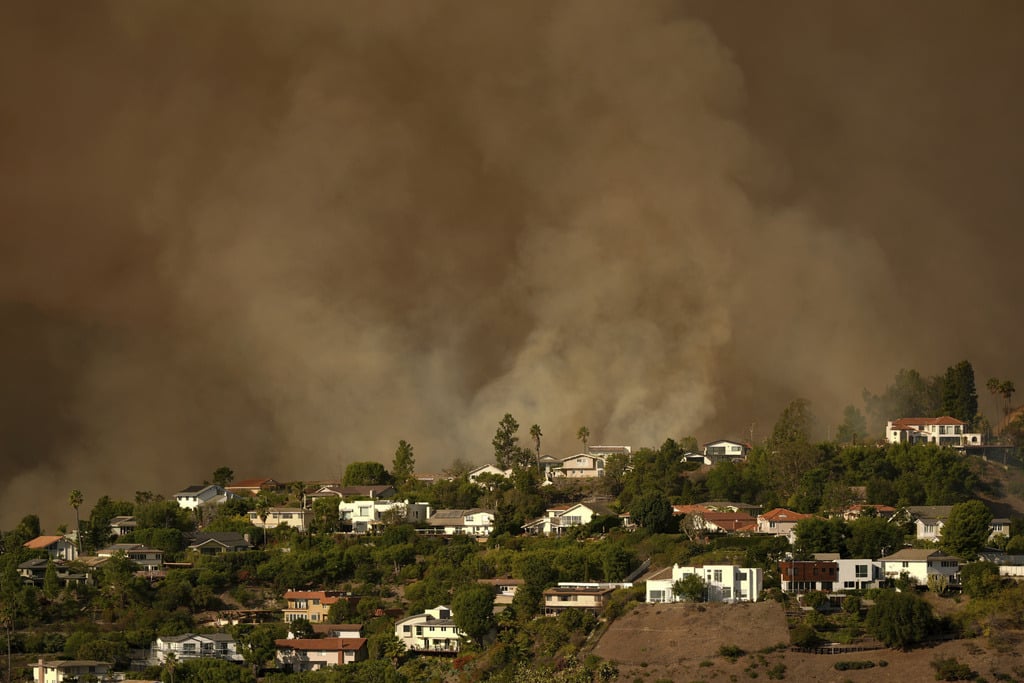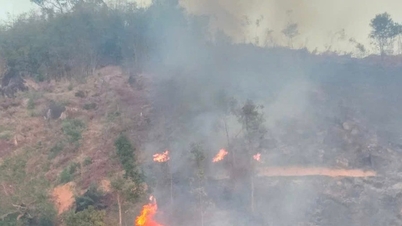(CLO) The wildfires in Los Angeles, California not only destroyed homes but also highlighted the insurance crisis in the state.
Thousands of people have been left homeless as the fires spread rapidly and fiercely, fueled by Santa Ana winds, dry conditions and flammable vegetation, a consequence not only of climate change but also of uncontrolled urban development.

Smoke from the Palisades Fire rises over residential areas in Mandeville Canyon on Jan. 11, 2025, in Los Angeles. (Photo courtesy of AP, not for re-release)
In this context, many insurance companies, including State Farm, have cut or not renewed policies in fire-prone areas, citing too great a financial risk.
State Farm, the largest insurer in the United States, made headlines last year when it decided to limit its coverage in California. In a letter to California Insurance Commissioner Ricardo Lara in March 2024, CEO Denies Hardin said higher premiums were not enough to cover the costs of disasters.
“We did not want to take this step because we knew it would be difficult for people. However, we were forced to minimize the risk,” Hardin wrote.
State Farm is not alone. According to the California Department of Insurance, seven of the top 12 insurers have exited the market in the past four years, pushing nearly 500,000 residents to the state’s last-resort insurance program, the FAIR Plan.
However, the FAIR Plan also faces the risk of financial overload, with potential losses far exceeding its current ability to pay.
Legally, experts like Dave Jones (director of the Climate Risk Initiative at the Center for Law, Energy and the Environment) and Gary Kwasniewski (and attorney at the Los Angeles law firm Viau & Kwasniewski) argue that the insurers’ actions do not violate the law, as long as they comply with prior notice and non-discrimination requirements.
But many residents, especially in areas like Pacific Palisades, which has seen 28% of insurance policies not renewed since 2019, say they are being treated unfairly and without clear explanations.
Last month, California tweaked its policies to lure insurers back, including allowing the use of catastrophe models and shifting reinsurance costs to consumers. But those measures have not lowered insurance costs and could push them higher.
Floods and wildfires alone could cause more than $1 trillion in potential home value losses, raising concerns about a financial crisis in the insurance industry. Many U.S. states are also grappling with insurance issues, with efforts to address them having mixed results.
Ngoc Anh (according to Newsweek, JT)
Source: https://www.congluan.vn/nan-nhan-hoa-hoan-bi-cat-bao-hiem-o-los-angeles-co-nguy-co-mat-trang-post330113.html


![[Photo] Special flag-raising ceremony to celebrate the 135th birthday of President Ho Chi Minh](https://vphoto.vietnam.vn/thumb/1200x675/vietnam/resource/IMAGE/2025/5/19/1c5ec80249cc4ef3a5226e366e7e58f1)


![[Photo] Prime Minister Pham Minh Chinh attends the groundbreaking ceremony of the Tu Lien Bridge construction investment project](https://vphoto.vietnam.vn/thumb/1200x675/vietnam/resource/IMAGE/2025/5/19/d4a14c8f00214e42893e7760b91df468)
![[Photo] Party and State leaders visit President Ho Chi Minh's Mausoleum](https://vphoto.vietnam.vn/thumb/1200x675/vietnam/resource/IMAGE/2025/5/19/d7e02f242af84752902b22a7208674ac)


















































































![[VIDEO] - Enhancing the value of Quang Nam OCOP products through trade connections](https://vphoto.vietnam.vn/thumb/402x226/vietnam/resource/IMAGE/2025/5/17/5be5b5fff1f14914986fad159097a677)







Comment (0)